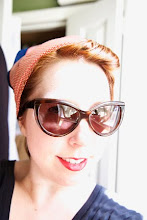


A very specific sub-genre to photographers who shoot their families is photographs of spouses. The collaboration between a photographer and his/her spouse explores the complicated relationship that exists within a marriage. The Model Wife, an exhibition and book put together by Arthur Ollman of the Museum of Photographic Art in San Diego in 2001, focuses on male photographers whose wives act as muses in their work.
Personally, I am not a fan of the title of this book and exhibition. “Model wife” has some patriarchal pre-feminist connotations for me. While I think Ollman was just trying to make a clever word play, it also opens the door to why only male photographers are included here. Certainly female photographers also photograph their husbands (Sally Mann, Elinor Carucci to name a few). But their images of their spouses are not as cemented in the photographic canon as their male counterparts. Traditionally, in the realm of family photography, female photographers are celebrated for their work revolving around their children and their roles as mothers, while men it seems are celebrated for photographing their wives. I realize that is quite a broad statement, but in my years of interest in this area of photography and my time researching the material for this blog, it does seem to be a recurring theme.
Excerpt from the book The Model Wife, by Arthur Ollman, Director of the Museum of Photographic Art
“Lee Friedlander is not a romantic. He is incompatible with sentimentality in art. It is interesting then, to look at his photographs of his wife Maria. He has photographed her for 40 years. Is this work free of nostalgia and romanticism, is it all just visual curiosity?
Friedlander was born in 1934 in Aberdeen, Washington. His mother died when he was seven. His father felt unable to raise him and sent him to live with a farmer about 110 miles south of Seattle, where he grew up. He met Maria de Paoli in 1957. He was twenty-three, she twenty-four. She was a child of an Italian neighborhood in New York, surrounded by the tumult of family and community. Working at Sports Illustrated as an editorial assistant, she ran into the young Lee Friedlander who was trying to get assignments at the magazine.
The photographs of Maria are notably free of some of Friedlander's most typical attitudes. The images usually feature Maria as the dominant figure of a relatively simple scene. The frames tend not to be cluttered. They are intimate, participatory views. Lee Friedlander is cool, even diffident, but his warmth is showing at the center of his life. (left: Lee Friedlander, Arches National Park, Utah, 1972, gelatin silver print, collection Museum of Photographic Arts)
Maria is seen calmly, dignified, alert, and gently admired. She often shows eye contact -- she was given an instant to compose herself -- in essence to create her own self-portrait. She is seen as a daughter, a cousin, a wife, a mother, a reader, a homemaker, a regular and companionable traveling partner. While rarely presented sexually, it is clear she is loved. The images are often sensual, and tactile references abound. In one, her daughter brushes her hair. In another, Maria sleeps in the sun, shadows gently brushing her cheek in a cafe. Friedlander's art identifies a solid, trusting family structure. His selection of daily observation reaches high poetry.
Friedlander's pictures of Maria show that even in his uninflected way of picture making, with its trope of neutrality and curiosity, that love and dependence are absolutely unlike other emotions. Love looks different than simple curiosity. Tenderness and respect, no matter how alloyed with other complex emotions, are inconsistent with neutrality. The photographs of Maria Friedlander illustrate affection that is both apparent and considerable. She has been shown to be an attractive, intense, intelligent, and loved partner. No other person appears as often in his work and no other personality is as fully described. For more than forty years, the Friedlanders continue to produce this extraordinary group of images, so long as Maria continues to ‘get in front of’ his camera.”





More excerpts from The Model Wife available online at: http://www.tfaoi.com/aa/2aa/2aa373.htm
The Model Wife book was produced in conjunction with a traveling exhibition by the same name at the Museum of Photographic Arts in San Diego, CA. The book’s author and director of the museum is Arthur Ollman. Ollman is also a photographer, whose work can be found here.

No comments:
Post a Comment